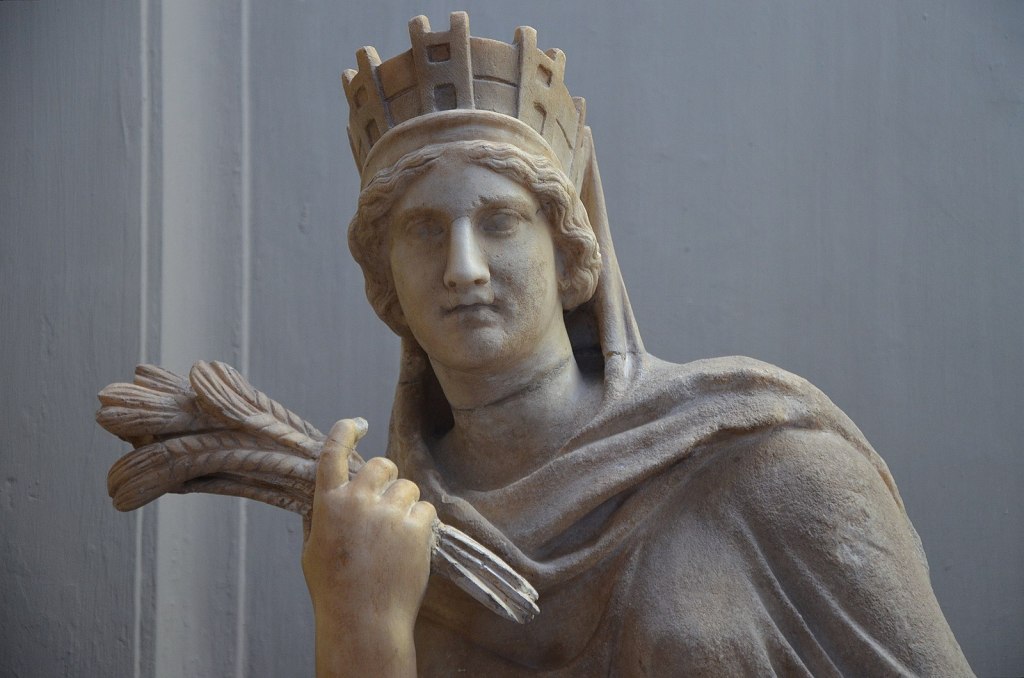On Thursday, I referred readers to an essay comparing the economies of ancient Rome and Greece. I am not the only one on an ancient Rome kick. In Aeon, Maggie Popkin writes about Roman tourists and the popularity of mementos and trinkets in the ancient world:
In the Roman Empire, which lacked a print culture, let alone digital media, souvenirs were crucial in disseminating knowledge of places, be they cities, monuments, buildings or statues. For people who could not travel to such sites in person — which included the majority of the empire’s inhabitants — reproductions were a key means for visualizing their physical appearance and cultural significance. Some of the most famous statues of the Greek world — masterpieces such as Athena Parthenos by Phidias, Aphrodite of Knidos by Praxiteles, and Tyche of Antioch by Eutychides — spawned veritable souvenir industries, not just at the sites where these cult statues stood but also, in some cases, elsewhere. Craftspeople churned out miniature reproductions that brought these statues before the eyes of people who would otherwise never see them. In fact, we too are among those who will never see the original statues made by the vaunted hands of Phidias, Praxiteles and Eutychides since these works do not survive. What we do have, however, are replicas — not only the large-scale marble copies that populate the pages of art history textbooks, but also, and much more numerous, souvenirs.
She goes on to argue that modern ideas of “originality” would have puzzled the ancients:
Today, we tend to look at a bronze figurine of the Tyche of Antioch or a plaque of the Athena Parthenos and ask how it can help us reconstruct the lost “original”; in other words, we adopt a Kopienkritik mindset. Approaching ancient objects as documents of originals, however, is antithetical to how Romans themselves conceived of originality. Our ideas about authenticity would have puzzled ancient Romans, who cared little about distinctions between (supposedly authentic) originals and (somehow less worthy) copies. An ancient Roman could never own Phidias’ Athena Parthenos: that statue belonged to Athens and, ultimately, the goddess herself. A terracotta souvenir of the Athena Parthenos would have cost a minuscule fraction of the gold and ivory original but, in terms of bringing the goddess into one’s daily life and commemorating the city of Athens and its patron goddess, the souvenir would not necessarily have been less valuable.
In other news
Kathleen McDonnell writes about the pleasures and science of cold-water swimming: “For centuries, claims that cold-water swimming improved human health and wellbeing were based largely on folk wisdom and anecdotal accounts. That began to change in the late eighteenth century with the work of Scottish physician James Currie, who used cold water in the successful treatment of a contagious fever in Liverpool. In 1797, he published an influential pamphlet, Medical Reports on the Effects of Water, Cold and Warm, as a Remedy in Fevers and Other Diseases, that contains the first English record of clinical observations using a thermometer.”
Howard Husock revisits the clash between historian and activist Howard Zinn and John Silber, the president of Boston University where Zinn was a professor for twenty-four years, and argues that Silber’s work should be read more than it is:
Since their deaths (Zinn’s in 2010, Silber’s in 2012), the duo’s debates have been forgotten, and their reputations have diverged. Today, Zinn’s thought lies at the center of the progressive canon. A People’s History of the United States, his most famous work, has sold more than 2 million copies, become one of the most widely assigned books in American high schools and colleges, and, in its recent 35th-anniversary edition, was labeled a classic. Silber, meanwhile, has faded from public discourse, memorialized in many accounts chiefly as Zinn’s “neoconservative” antagonist who obsessed over anti-communism, fought his faculty’s unionization effort, and ruled BU as a petty tyrant, denying Zinn pay raises and teaching assistants. Silber’s books — Seeking the North Star (which includes an impressive foreword by Tom Wolfe) and Straight Shooting — are as out of fashion as their author is. They deserve more attention, as does he.
Ralph Ellison took seven years to complete Invisible Man, the only novel published during his lifetime, and at several moments along the way it seemed he never would. Anne Trubek tells the story.
Patrick Kidd writes about the German tennis champion who missed the 1939 Wimbledon because he refused to bow to the Third Reich: “Baron Gottfried von Cramm, who lost three Wimbledon finals from 1935 to 1937, should have been one of the favorites that year. He had won the French Championships twice, been world No 1 and breezed through the 1939 Championships of London at Queen’s Club. In the semi-finals he defeated Bobby Riggs, an American who would win that year’s Wimbledon, for the loss of one game and won the final almost as easily. ‘If ever a player looked as if he could go on and win Wimbledon,’ wrote The Times, ‘it was von Cramm.’ Except he was absent. The Nazis didn’t want him to play and Wimbledon didn’t invite him.”
W.H. Auden was a dazzling poet, but he shines as an essayist, too, Michael Dirda writes:
My own passion really caught fire at Oberlin College after I made the acquaintance of Robert Phelps, the literary journalist father of one of my roommates. Not only did Robert teach a course on Auden at Manhattan’s New School, but his Greenwich Village apartment also housed copies of all the poet’s books, as well as much associated material. Through Robert’s influence, I began to discover the breadth of Auden’s genius. I remember opening the 1962 essay collection The Dyer’s Hand one Sunday morning during a breakfast at South Hall that featured hot, freshly made doughnuts. Much later, after Robert’s death, I inherited his copy of The Enchafèd Flood (1950) — Auden’s thrilling study of the romantic iconography of the sea — as well as his jacketless, scribbled-in first editions of the poetry.
Rosemary Hill reviews Graham Robb’s speculative history of France:
Robb’s adventure history of France opens… on familiar if shaky ground with an account of the druids as “a priestly caste of scientists and intellectuals”. He also invokes an even hazier but more dramatic theory, popularized by Aylett Sammes in his Britannia Antiqua Illustrata of 1676. Extrapolating wildly from Caesar, Sammes’s book features a spectacular illustration of a giant wicker man in flames, filled with human sacrifices. His contemporaries mostly wrote him off as a fool, and a “girning and pedantical coxcomb”, but it made no difference. The image proved indelible, right up to the remake of The Wicker Man in 2006. Robb ignores recent studies of the druids, the most important of which is Ronald Hutton’s Blood and Mistletoe (2009). While Hutton is concerned chiefly with the druids in Britain, the primary sources are the same and his scholarly and balanced account of the history and the myths deserves at the very least respectful disagreement. Robb, however, prefers his own Ancient Paths as his principal source. From this slippery starting point he continues to veer unpredictably between history, psychogeography, autobiography, speculation and travel writing.

























